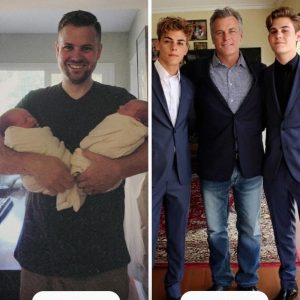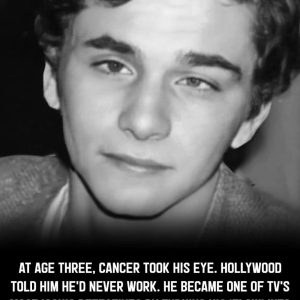Aileen Wuornos’s life began under a cloud of neglect, instability, and trauma that would shape her entire existence. Born in 1956 in a small Michigan town, her early years were marked by abandonment and violence. Her mother disappeared when Aileen was just four, leaving her and her brother to fend for themselves, later admitting the decision was likely a grave mistake. Almost simultaneously, her father—already imprisoned for sexual assault—died by suicide in prison. The children were sent to live with their grandparents, but safety remained elusive. Her grandmother struggled with alcoholism, and her grandfather was reportedly violent and predatory, creating a household steeped in verbal abuse and neglect.By the age of 11, Aileen had begun trading sexual favors at school for basic necessities such as food, drugs, and cigarettes, a pattern that continued as she drifted onto the streets. By 13, she had become pregnant after an assault, though the details remain murky and no legal action was taken. She placed the child for adoption, hoping he would escape the cycle of trauma she had endured. The successive deaths of her grandparents left Aileen and her brother wards of the state, further destabilizing her life. During her adolescence and early adulthood, she survived through petty crime, prostitution, and occasional arrests for theft and disorderly conduct, laying the groundwork for a life characterized by risk and survival.By her mid-20s, Aileen had relocated to Florida, where her trajectory took a darker turn. In 1989, authorities discovered the body of a man shot multiple times near Daytona Beach, initiating an investigation that quickly revealed a troubling pattern. Wuornos became linked to the deaths of multiple men across central Florida, ultimately confessing to several murders. She claimed that each killing was in self-defense, asserting that the men had attempted to assault her and she had acted to protect her life. In interviews, she described a life steeped in trauma and violence, asserting that her repeated victimization had shaped her worldview and responses to threat.Despite Wuornos’s self-defense claims, prosecutors portrayed her as a calculated and deliberate killer who lured men, shot them, and took their belongings. By the time of her trial, she faced accusations of murdering seven men in the span of a single year. The media quickly sensationalized the case, dubbing her America’s first female serial killer and labeling her the “Damsel of Death.” Investigators emphasized that her actions fit the profile of a serial killer, highlighting the deliberate and repeated nature of the crimes. Her notoriety extended beyond newspapers, inspiring documentaries, books, and eventually a Hollywood dramatization of her life and crimes.Wuornos’s trial became a media spectacle. She admitted to the killings in court, calling herself a serial killer and expressing her disdain for humanity. Her defense of self-preservation was rejected by the jury, which sentenced her to death on six counts. While on death row at Broward Correctional Institution, Wuornos expressed frustration with delays in her execution and continued to voice her hatred and self-identification as a killer, claiming she would repeat her actions if given the chance. Her statements underscored both her acknowledgement of guilt and the deeply ingrained anger and trauma that had marked her life from childhood onward.On October 9, 2002, Aileen Wuornos was executed by lethal injection at the age of 46. Her final words were cryptic and unsettling, referencing spiritual imagery and suggesting a return “like Independence Day, with Jesus,” reflecting the complex and chaotic nature of her inner world. Her life and crimes left a lasting imprint on American society, challenging observers to confront the intersections of childhood trauma, systemic neglect, and violent behavior. Aileen Wuornos’s story continues to provoke debate: was she born inherently violent, or was she a product of the abuse, neglect, and exploitation she endured from infancy? Her legacy remains a chilling lens through which the consequences of extreme trauma are examined.
Related Posts

I raised my twin sons alone after their mother left. Seventeen years later, she returned, making an outrageous request that stunned me and tested the family bonds we had built over nearly two decades of love and perseverance.
Seventeen years after abandoning their newborn twin sons, Vanessa returned just minutes before their high school graduation, claiming the title of “Mom.” Her sudden reappearance stirred memories…

This plant supports both brain and digestive health. Rich in antioxidants and essential nutrients, it may improve memory, focus, and cognitive function while also aiding digestion, soothing the gut, and promoting overall well-being when incorporated into a balanced diet.
Celery often carries a reputation that teeters between miracle food and humble vegetable. Touted by some as a superfood capable of promoting detoxification, weight loss, and instant…

Tragically, this iconic star forgot the role that defined his career before his passing. Friends and colleagues reflect on his remarkable performances, celebrating his enduring legacy in film despite the heartbreaking memory loss that marked his final days.
Few TV detectives have left a mark quite like the rumpled, raincoat-wearing sleuth “Columbo.” For decades, audiences watched Peter Falk’s iconic character shuffle into crime scenes with…

BREAKING: A massive fire has damaged or destroyed an estimated 300 homes. Emergency services are responding, and residents are being evacuated. Authorities are assessing the situation, while communities rally to support those affected by the widespread destruction.
Devastating Fire Hits Pamplona Alta, Lima San Juan de Miraflores, Lima — A massive fire tore through the Pamplona Alta neighborhood on Saturday afternoon, consuming a densely…

After discovering my wife of six years was cheating, I stayed silent, hiding my knowledge. She never expected the carefully planned surprise I had prepared, a move that would reveal my awareness and completely change the course of our relationship.
The cracks in the marriage appeared quietly at first. The narrator, a 32-year-old father, noticed subtle signs: missed school pickups, unusual errands, and inconsistencies in his wife…

At nearly 103, he remains a shining figure in Hollywood, inspiring generations with his talent, charm, and longevity. His enduring presence reflects decades of cinematic history, dedication, and resilience, cementing his status as one of the industry’s most celebrated icons.
At 32, the narrator’s life began to fracture quietly. His wife, Maren, increasingly neglected their children and family responsibilities under the guise of work-from-home flexibility. Small cracks…